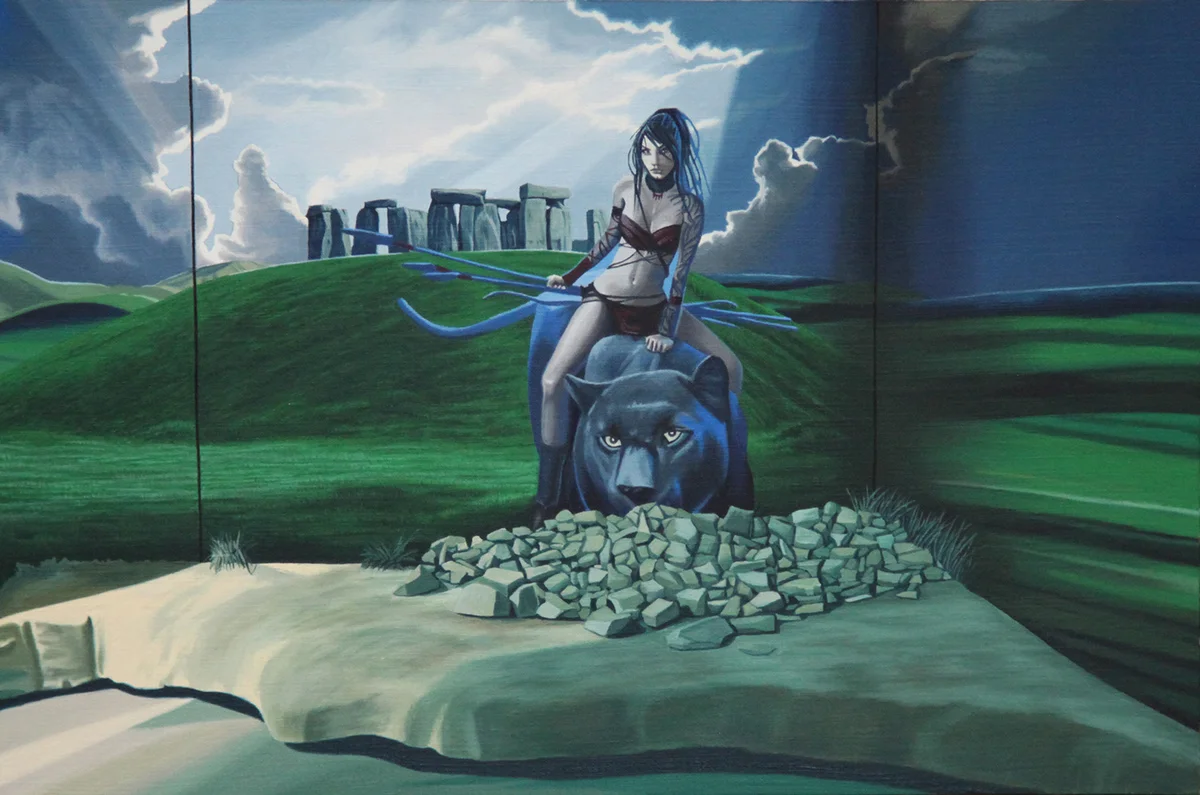James Moore: The Other Side of the Moon
by Sara Jaspan
James Moore - Jimi Hendrix Abandons Cardiff AD1967 (2017)
Humans used to wonder what the other side of the moon looked like. But now that man and robots have been; there’s no need to imagine. We’ve photos and film footage. You can navigate its surface via a range of 3D immersive computer games or watch each of its different phases pass through an entire year-long cycle in a short five-minute simulation on YouTube.
Similarly, it’s no longer necessary to cross the Atlantic to know what America looks like. We’re flooded with its sights and sounds from images, films, news footage and TV programmes every day. You can even zoom in on individual streets using Google Maps. These mediated representations of elsewhere places make them seem ‘real’; make us feel as though we have actually visited or ‘encountered’ them on some level.
James Moore is an artist whose practice explores the ever-increasing role of simulacra in our experience of the world; which is now dominated by images, screens, reproductions, imitations and simulations that conversely distance us from the original or ‘real’. His paintings have a distinctly surrealist, dream-like quality to them; each one based on a composition Moore creates in Photoshop, collaging together an array of different visual elements to perpetuate an aesthetic of exaggerated fakery and echo the vying multiplexity of today’s layered visual landscape.
James Moore - The Golden Age, oil on paper (2016)
To return to the lunar example, The Golden Age references the first moon landing; an event which the majority of us ‘witnessed’ (either at the time or subsequently) and agree happened (despite being the subject of countless conspiracy theories), yet will only ever have a brokered experience of. The scene seems to take place within an artificial three-dimensional box, reminiscent of a museum diorama or stage set. While the incongruous 1960s-style television alludes to the medium through which most of man made ‘the giant leap’.
In other works, Moore explores the idea of history as a constructed narrative of the past, offering fictional (rather tongue-in-cheek) representations of events that are broadly agreed to have occurred, yet no one living has encountered. This is seen in A Silurean Warrior Abandons Cardiff AD74 (2015), which, like The Golden Age, appears more like a comically cheap – in this case, over-sensationalised and hyper-sexualised – restaging; the foreground contains materials that look like flimsy cardboard or MDF, while the background has the appearance of something out of a fantasy-based computer game. Mammoth Abandoning Cardiff 110,000BC (2015), meanwhile, emits a strong whiff of CGI, bringing to mind the popular BBC documentary Walking with Dinosaurs (1999).
James Moore - A Silurean Warrior Abandons Cardiff AD74, oil on paper (2015)
For his upcoming part in PAPER’s group exhibition, Lost in Space, at London Art Fair (16-21 January 2018), Moore has turned his attention to a range of local legends and popular urban myths – events that many have imagined but few, if any, have borne witness to. Mr & Mrs Cobain at TJ’s, Newport, AD1991 (2017), for example, relates to the moment when the two global celebrities are said to have got engaged after a gig in Newport, while Jimi Hendrix Abandons Cardiff AD1967 (2017) stems from a story that the millionaire rock guitarist slept on Roath Park City Lake after performing in Cardiff one night.
Words by Sara Jaspan
James Moore - Mr & Mrs Cobain at TJ’s, Newport, AD1991, oil on paper, (2017)




